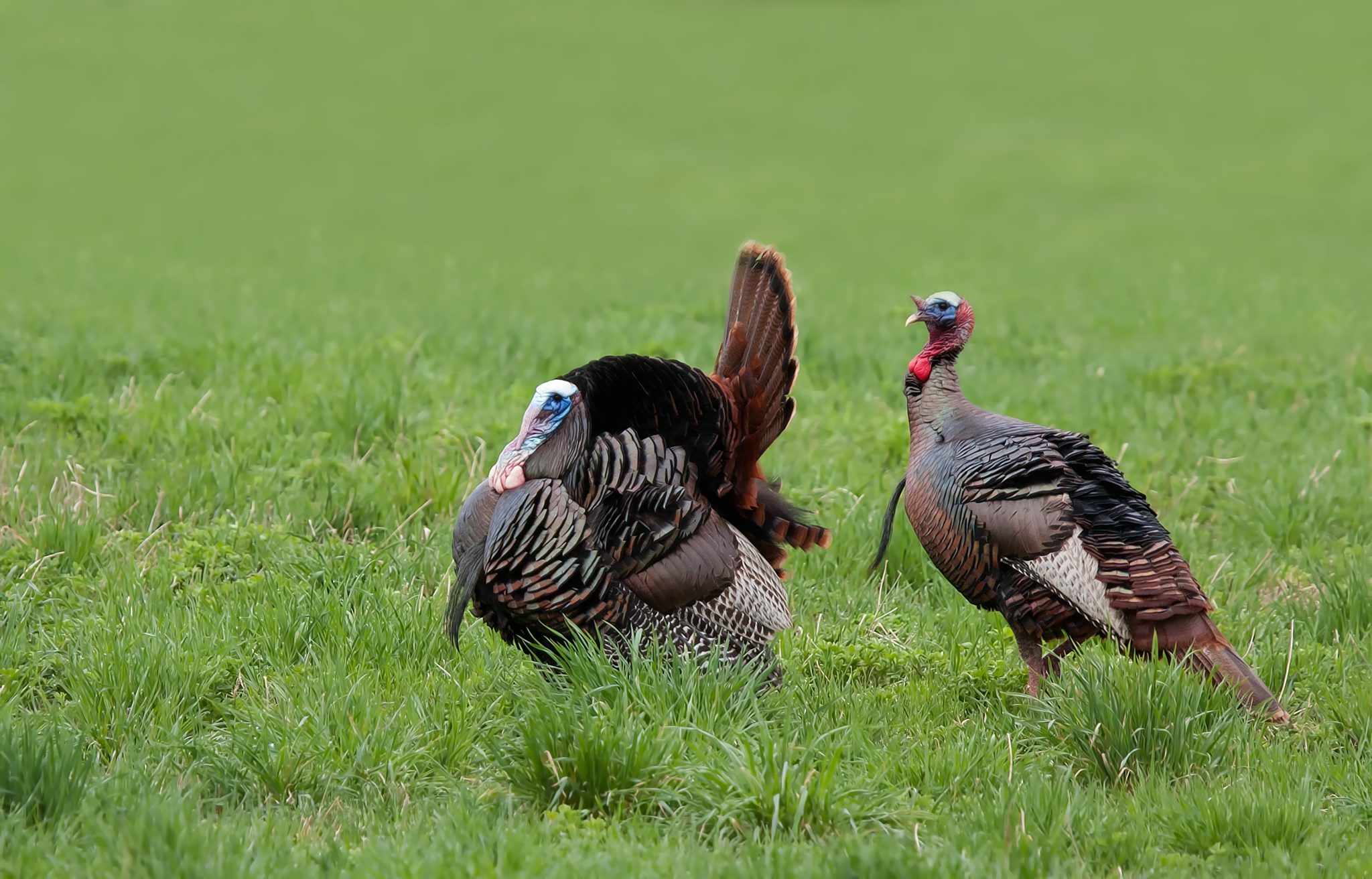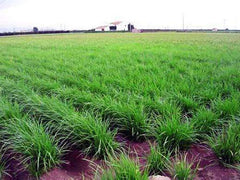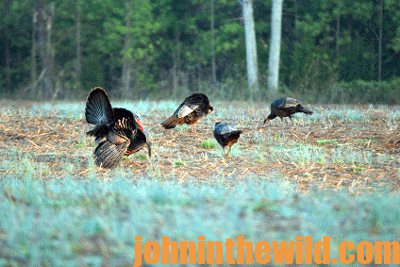Yes, deer do eat chufa. Chufa, also known as tiger nut, is a favorite food for deer.
These nutritious tubers are rich in carbohydrates and fats, making them an excellent energy source for wildlife. Chufa is often planted by hunters and wildlife enthusiasts to attract and support deer populations. The plant itself is easy to grow and can thrive in various soil types.
Deer are naturally drawn to chufa because of its high nutritional value. The tubers grow underground, so deer dig them up to eat. This behavior helps keep deer healthy and well-fed, especially during colder months when other food sources are scarce. Understanding deer diets and their attraction to chufa can help in managing and supporting local deer populations effectively.

Credit: www.aces.edu
Introduction To Chufa
Deer are known to eat chufa, a type of nut grass. This plant provides a valuable food source for them. Chufa is rich in nutrients, making it a preferred choice for wildlife.
Chufa, also known as tiger nut, is a small root vegetable. It belongs to the sedge family. It has been cultivated for thousands of years. People often use it in various traditional dishes. Chufa is gaining popularity due to its health benefits. It is also a favorite among wildlife, including deer.What Is Chufa?
Chufa is a tuber that grows underground. It is native to Africa and the Mediterranean. Farmers cultivate it for its edible roots. These roots are small, round, and wrinkled. They have a sweet, nutty flavor. Chufa is often dried and eaten raw or roasted. It can also be ground into flour. This flour is used in baking and cooking.Nutritional Value Of Chufa
Chufa is rich in nutrients. It is high in fiber, which aids digestion. It contains healthy fats, which are good for the heart. Chufa is also a good source of vitamins and minerals. These include Vitamin E, potassium, and magnesium. It is gluten-free, making it suitable for those with gluten intolerance. Its nutrient profile makes it a healthy addition to any diet. “`Deer Diet Basics
Understanding what deer eat helps in knowing their behavior and habitat. Their diet changes with the seasons and availability of food.
Common Foods Deer Eat
Deer are herbivores. They eat a variety of plants. Here are some common foods:
- Grasses
- Leaves
- Twigs
- Fruits
- Nuts
In fall, they prefer acorns and other nuts. During spring and summer, they consume green plants and leaves. In winter, they eat woody plants and twigs.
Nutritional Needs Of Deer
Deer need nutrients for energy, growth, and reproduction. Their diet must include:
| Category | Nutritional Needs |
|---|---|
| Protein | Essential for growth and development |
| Carbohydrates | Provide energy |
| Fats | Store energy and help in insulation |
| Vitamins | Vital for metabolic functions |
| Minerals | Necessary for bone health and other functions |
Maintaining a balanced diet is crucial for deer health. They need diverse food sources to meet their nutritional needs.
Chufa And Deer
Chufa, also known as tiger nuts, are a type of sedge plant. They produce small tubers that grow underground. These tubers are highly nutritious. Deer love to eat them. Chufa can be an excellent food source for deer. Let’s explore why deer like chufa and the benefits it provides.
Do Deer Like Chufa?
Deer are naturally attracted to chufa. They enjoy the taste and the nutritional value. Chufa tubers are rich in starch. This makes them an energy-packed snack. During the fall and winter months, deer search for high-energy foods. Chufa fits this need perfectly.
Hunters and wildlife enthusiasts often plant chufa to attract deer. This makes chufa a popular choice for food plots. Deer will dig into the ground to reach the tubers. This behavior shows their preference for chufa over other plants.
Benefits Of Chufa For Deer
Chufa provides many benefits for deer. Here are a few key advantages:
- High Nutritional Value: Chufa is packed with starch, fat, and protein. These nutrients are vital for deer, especially in colder months.
- Energy Boost: The high starch content gives deer an energy boost. This is crucial for their survival and overall health.
- Easy to Plant: Chufa is relatively easy to plant and grow. It thrives in various soil types, making it a versatile food plot choice.
- Attracts Deer: Planting chufa can draw deer to a specific area. This is beneficial for wildlife watchers and hunters.
In summary, chufa is a favorite among deer due to its taste and nutrients. It provides essential energy and is easy to cultivate. Planting chufa can attract deer to your area, offering a reliable food source.
Planting Chufa For Deer
Planting chufa for deer can be a smart strategy. This nut-like tuber is a favorite food source for deer. It provides essential nutrients. By planting chufa, you can attract more deer to your land. Let’s explore the best time to plant and the ideal growing conditions for chufa.
Best Time To Plant
Plant chufa in late spring. The soil temperature should be at least 65 degrees Fahrenheit. This ensures good germination. You can also plant chufa in early summer. It needs around 90 to 110 days to mature. This timing gives it plenty of warm days to grow.
Ideal Growing Conditions
Chufa grows best in sandy or loamy soil. The soil should drain well. It does not like standing water. Make sure the soil pH is between 5.5 and 7.5. This range is optimal for nutrient absorption.
Provide full sun for the chufa. It needs at least six hours of direct sunlight each day. This helps it grow strong and healthy. Water the chufa regularly. Keep the soil moist but not soggy. Consistent moisture promotes tuber development.
Maintaining A Chufa Plot
Maintaining a chufa plot is crucial for healthy growth and maximum yield. Chufa, a type of sedge, attracts deer and other wildlife. To ensure a thriving plot, focus on protection, proper harvesting, and continuous care. This guide provides essential tips for maintaining your chufa plot.
Protecting Your Plot
Protecting your chufa plot from deer and other animals is essential. Use fencing to keep deer out. A simple wire fence works well. Install the fence around the entire plot.
Another method is using repellents. Spray natural repellents around the plot’s perimeter. Reapply after rain or every two weeks. Planting other crops around the chufa can also help. Deer may eat these instead.
| Protection Method | Description |
|---|---|
| Fencing | Use wire fencing around the plot |
| Repellents | Spray natural repellents around the plot |
| Companion Planting | Plant other crops to distract deer |
Harvesting Chufa
Harvesting chufa is straightforward. Wait until the plant turns brown. This indicates maturity. Use a shovel to dig up the tubers. Be gentle to avoid damaging them.
Wash the tubers thoroughly after harvesting. Dry them in a cool, shaded area. Store chufa tubers in a dry place. Proper storage ensures they last longer.
- Wait for plants to turn brown
- Use a shovel to dig up tubers
- Wash and dry the tubers
- Store in a cool, dry place
Maintaining a chufa plot requires effort. By protecting your plot and harvesting properly, you ensure a bountiful yield.

Credit: hancockseed.com
Wildlife Benefits Of Chufa
Chufa, also known as tiger nuts, is a valuable food source for wildlife. It offers several benefits to different animal species. These small tubers are high in nutrients and energy. This makes them a favorite among many animals, including deer.
Attracting Other Animals
Besides deer, chufa attracts a variety of wildlife. Turkeys, for example, are known to dig up chufa tubers. They find them highly nutritious and delicious. Squirrels and raccoons also enjoy chufa. This makes chufa a great choice for anyone wanting to support local wildlife.
Chufa can be planted in small plots or large fields. This flexibility helps attract a diverse range of animals. It also provides a consistent food source throughout the year. This is especially important during the winter months. Food is often scarce, and chufa helps fill that gap.
Biodiversity And Chufa
Planting chufa can enhance local biodiversity. It encourages different species to visit and stay in the area. This creates a healthier ecosystem. More plant species often lead to a greater variety of animals. This is beneficial for the environment as a whole.
Chufa also helps the soil. It improves soil health by adding organic matter. This helps retain moisture and nutrients. Healthy soil supports a wide range of plant and animal life. Thus, chufa contributes to a balanced and vibrant ecosystem.
| Animal | Benefit from Chufa |
|---|---|
| Deer | High-energy food source |
| Turkeys | Nutritious and delicious tubers |
| Squirrels | Rich in nutrients |
| Raccoons | Consistent food supply |
In summary, chufa is a valuable addition to any wildlife habitat. It supports a variety of animals and enhances biodiversity. This makes it a smart choice for anyone looking to improve their local ecosystem.
Challenges With Chufa
Chufa, also known as tiger nuts, can be a great food source for deer. However, growing chufa comes with its own set of challenges. These challenges can affect the quality and quantity of your chufa crop.
Pests And Diseases
Pests love chufa. Insects like wireworms and aphids can damage the crop. These pests feed on the tubers and leaves, which reduces yield. Birds can also be a problem. They eat the seeds before they have a chance to grow. Protecting your crop from these pests is essential for a good harvest.
Diseases also pose a threat. Fungal infections can occur, especially in wet conditions. These diseases can kill the plants before they produce tubers. Regular monitoring and proper care can help you manage these issues. Using disease-resistant varieties can also be beneficial.
Managing Overconsumption
Deer love chufa. They might overconsume the crop. This can lead to a shortage before the season ends. To manage this, consider planting more chufa than needed. This ensures that there is enough for the deer throughout the season.
Fencing can also help. It limits deer access to the crop. This way, the deer do not overconsume the chufa all at once. Rotating the areas where you plant chufa can also be effective. It gives the plants a chance to grow back and ensures a steady supply.

Credit: johninthewild.com
Frequently Asked Questions
What Is Chufa?
Chufa is a type of nut-like tuber. It grows underground.
Do Deer Eat Chufa?
Yes, deer eat chufa. They find it tasty and nutritious.
Why Do Deer Like Chufa?
Deer like chufa because it’s high in energy. It’s also easy to dig up.
Is Chufa Good For Deer?
Yes, chufa is good for deer. It provides essential nutrients they need.
How To Plant Chufa For Deer?
Plant chufa in well-drained soil. Water it regularly. Deer will come to eat it.
Conclusion
Deer enjoy eating chufa. This plant provides essential nutrients for them. Hunters often use chufa to attract deer. It grows well in many environments. If you want to support local wildlife, consider planting chufa. It benefits deer and other animals.
Plus, it’s easy to grow and maintain. So, chufa is a great choice for wildlife enthusiasts. Try it and see the difference in your area. Deer will thank you!